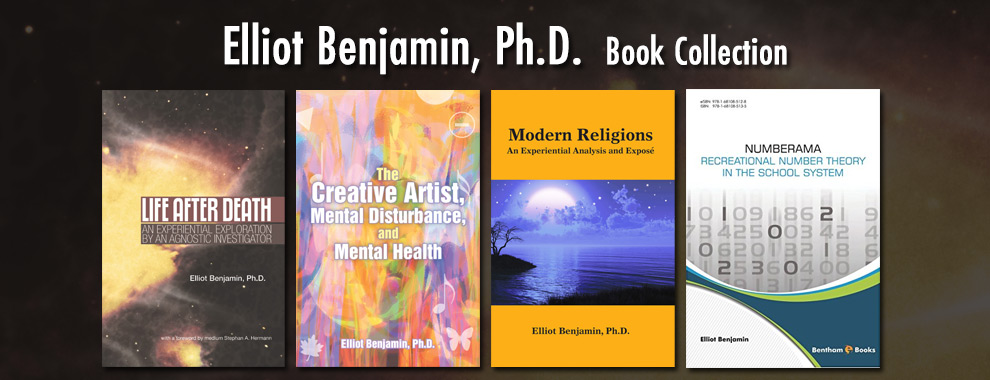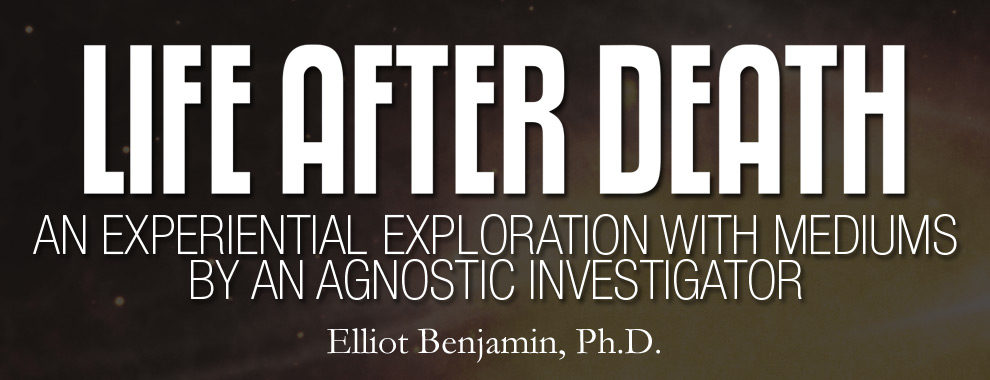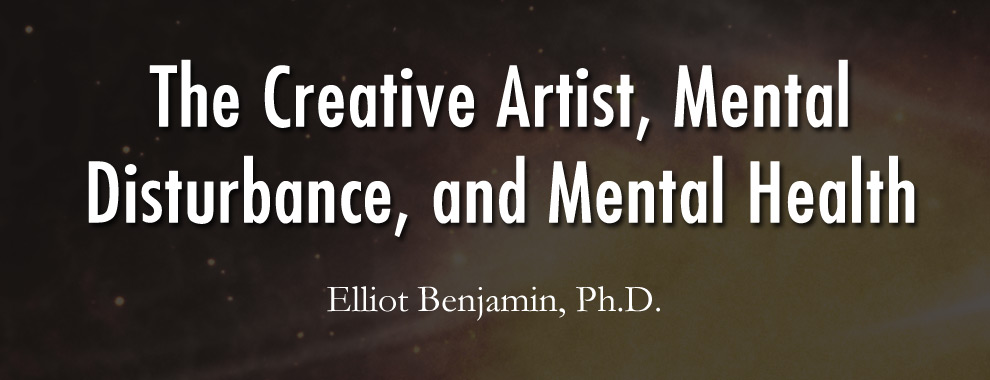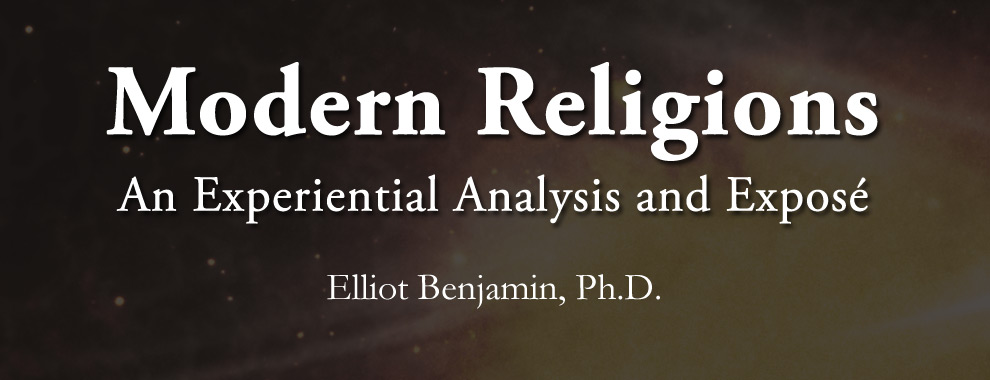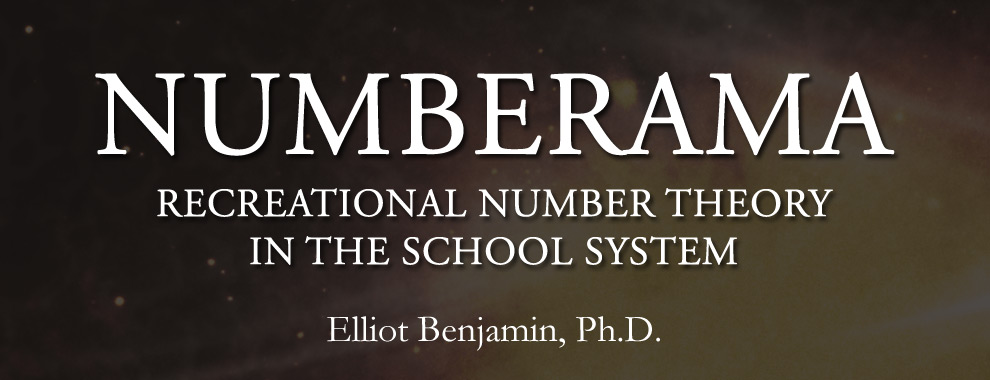The Journal of Transpersonal Psychology, 2015, Vol. 47, No. 1
BENJAMIN, ELLIOT (2013). e Creative Artist: Mental Disturbance and Mental
Health . Raleigh, NC: Lulu Publishing Services. 452 pp. ISBN 978-1-48340-355-
7, Paperback, $24.50. Reviewed by Ruth Richards.
This unique book, e Creative Artist, Mental Disturbance and Mental Health,
by Elliot Benjamin, Ph.D., should perhaps be classified as autoethnography
and is a very readable gift of personal sharing and artistic promise. Here one
finds theory, personal contemplation over a few decades, sections of a novel,
and vivid in the moment notes from his creative and adventurous son, also
leading the creative artistic life in a society that doesn’t always encourage it.
Both are clearly persons of exceptional creative talent and complexity—and of
persistence and strength. As Dr. Benjamin (with Ph.D.’s in both math and
psychology, who taught math for over 20 years at the college level) said years
before, in a letter to his yet unborn son, he wished him the ‘‘joys of being
‘yourself, i.e., to know what it means to life an authentic life where you are true
to your own dreams and ambitions’’ (p. 61).
As Dr. Benjamin, this creative artist/mathematician/musician/philosopher/
psychologist/author, also found, this authenticity can be vital to one’s
connection with others (in his own life and his son’s), and can lead to
exceptional moments whether with family, friends, or one’s life partner. Surely
there is health here. Yet making it a mainstay of one’s life, in our consensual
reality and our current culture, may not always be that easy. Out of this
conviction came Dr. Benjamin’s own skill learning and educational,
psychoeducational, and supportive program, the Natural Dimension; we see
alternative trajectories along a humanistic and transpersonal path. Among
other things, his overarching model became a viable aftercare path for some
patients leaving more traditional mental health programs.
Yet finding and sharing our self and path is hard enough for anyone whose felt
creative task is to reveal an inner world that even minimally challenges the
status quo; there are many forces arrayed against such a change in the larger
world, as this reviewer, for one, has expressed. Dr. Benjamin expresses this
powerfully in terms of his ‘‘reality argument,’’ where we are called to do the
practical, the lucrative, and very much the expected. He, himself, could teach
mathematics—dealing with the practical world—although, there too, he did
find colorful ways to inject creative methods into the programme. Not to
mention, in his larger life, philosophy and music. He found it quite natural to
inject another world, one of elegance and beauty, into the picture. He was
drawn to a wish to ‘‘taste of ‘higher’ worlds.’’ Yet the role, and the task, isn’t
always one of beauty, nor of escape. Nor is everyone at a higher level of
psycho-social-spiritual development.
Further, not every creator is called to take this particular path. Sometimes the
creative artist, committed to a path of vision, takes a role of truth teller more
than visionary, poignant teller of bitter truths that others prefer to skip, or
deny (along with most of society). He or she, as an artist friend of mine put it,
is often ‘‘the canary in the coal mine.’’ Not only more sensitive to what’s going
on, but also at times more readily injured by it as well Some real dangers and
challenges here. It surely can help to have support, and role models and
encouragement, as we indeed see here in what father is offering son. But one
must not think all is euphoria. There may be such moments, as the son
delightfully remembers from his youth. But it is not the whole picture.
All the more, then, strength and overriding purpose are needed if there are
mental health challenges to address, particularly in a world that can
pathologize difference, of whatever sort, healthy or not. Some of us have in
fact asked for a different definition of ‘‘normal,’’ including this author in the
steps of the legendary Frank Barron, since what is most common (one type of
norm) may not in fact be the healthiest — at all. This is very much what we are
hearing here, in terms of conformity to social norms. At one extreme we have
a mindless automaton, following conventional rules, by contrast with a very
present, aware, insightful, and risk-taking artist, a higher ideal if not a statistical
‘‘norm.’’ Dr. Benjamin has called society, at times, crazy. I have done so a
well!
Fortunately, the author does not fall into the trap of romanticizing illness (or
saying it is de facto creative in itself) or that all who create are ill or vice
versa. It is definitely not ‘‘the sicker the better.’’ He acknowledges there are
many roads to creativity. One must still keep in mind that there are many
types of creative artists and motives for creating. Of particular importance,
health is the overriding message. How tragic the consequences for some who
have idealized illness. Yet on the upward path, some may indeed reach
heights of Maslow’s (1968) ‘‘self-actualizing’’ creativity, as suggested here, it
is not all. Dr. Benjamin mentions that, at times, ‘‘a fine line’’ may divide the
creative artist and the mentally disturbed person. Yet, let us look more
carefully here.
Some truth can be found, but it seems vital to clarify that this is in comparing
specific pieces of a complex human picture, and not necessarily the totality, or
the delicate balance and conditions that produced them. Dr. Benjamin was
once fortunate to converse at great length with philosopher Ken Wilber (1995),
who was intrigued by Dr. Benjamin’s thinking and also influenced it
considerably, including the Natural Dimension. This contact led to many of
Dr. Benjamin’s later publications. However, Wilber has also made this same
point in a spiritual context: Advanced spiritual development may at times
resemble more primitive patterns (pre/trans fallacy), yet the context and
significance can be totally different. They may all look like oranges but in fact
they are apples and oranges.
Despite findings of above average rates of psychopathology (and particularly
mood disorders, with evidence as well for schizophrenia spectrum disorders)
among artists—often among the eminent (thus we cannot automatically say the
same for everyday people) —the literature does suggest high creativity is much
more about health than illness. (Plus there are other paths, not at all about
illness.) Here, creativity tends to peak—where mental disturbance is present a
all, in individuals or in families, especially in research on people in the bipola
and schizophrenia spectra. Creativity peaks during during better functioning
periods. And, as a corollary, getting treatment can—not only be lifesaving in
some cases but also can— enhance creativity
One may speak of creativity as a compensatory advantage, and there is good
everyday creativity data we (e.g., colleagues Dennis Kinney and others at
Harvard) and others have to support this. Indeed it can be a major strength in
situations of risk, allowing perspective, alternatives, transformations of
a situation; one finds a delicate balance of the forces that open one to
inspiration, balanced by the control factors or executive functions that can
shape this to adaptive ends. This is what the neo-Freudians earlier called
‘‘regression in the service of the ego.’’ This is the Freudian ‘‘ego’’ used in the
sense of ‘‘adaptation to reality.’’ Dr. Benjamin mentions ‘‘ego strength’’ (p. 57)
as well. This is the ego-strength we wish some teenagers would show more
strongly, or show more often. In high level creators, the overarching control
may fluctuate, allowing certain flights of fancy, and even, and by deliberate
choice, the taking of psychological residence (think of the novelist) in
alternative worlds. Yet ultimately, and when needed, that loose overriding
control is always there.
What we see in these rich personal journeys and reflections are, first, Dr.
Benjamin’s own thoughtful conclusions on relations between arts, menta
health, mental disturbance, spirituality and other factors. A positive
trajectory of overcoming is seen to include the author’s brother, who is
viewed as manifesting ‘‘self-actualization’’ despite obstacles. This includes the
interesting issue, later overcome in a more transpersonal context, of what he
calls egoism. Let us put our pointer again on ‘‘ego-strength.’’ It is not or need
not be ‘‘all about me,’’ but we do need to strengthen qualities of the self.
Beyond this, mental health is here defined, in higher developmental terms,
ethically and psychologically. For this purpose of intentions, we are not
necessarily speaking of all artists, either, but of a more prodigious subset—
and could it perhaps even be a trajectory for some artists who persist? Som
of us have thought so. See Maslow’s (1968) ‘‘deficiency’’ and ‘‘being’’ needs
as applied to creativity.
Dr. Benjamin’s essays of personal reflection elaborate on certain themes, and
very much his semi-autobiographical novel (excerpted here). How marvelous
too, to have a mathematician-author who is also an artist and a musician
and…can speak to us in so many languages and ways of knowing. Then, in son
Jeremy’s story, one hears in his own words (and lived in his own way), the
brave persistence in a tough and demanding first year as creator and actor in
Los Angeles, and the eccentricity that both helps him to cope and may be
misunderstood. Let one not automatically pathologize anxieties, late nights,
excess energy–but celebrate it, particularly when enacted in the service of those
overriding goals. Here, indeed, is that balance of creative talent with the
strength, grit, gumption, and resilience, to succeed. And, happily, some initial
success, after the first year. May this prodigious young man go on to do very
well indeed.
Ultimately, Dr. Benjamin wisely recommends education, counseling, and
supportive and insightful resources (such as he himself started) to provide
skills, perspective, encouragement and understanding of a different artistic
world and worldview, perspectives which a creative artist may need and no
find as readily in the conventional world – a world which must still be
maneuvered successfully. For Dr. Benjamin, as well, being a ‘‘philosopher in
life’’ has helped him see a larger picture and keep his own perspective. He
hopes that this heartfelt, authentic, and very personal series of accounts,
contextualized with his own exploration of the field, its literature, and its
voices, has also helped in ‘‘loosening the bonds between the creative artist and
mental disturbance, and of honoring my family heritage’’ (p. 399). I would say
it has surely done so. May its insights further help open the doors to creativity
for all of us.
REFERENCES
BARRON, F. X. (1968). Creativity and personal freedom . New York, NY: Van Nostrand.
DENZIN, N. K. (2014). Interpretive autoethnography . ousand Oaks, CA: Sage
Publications.
GOODWIN, F., & J AMISON, K. R. (2007). Manic-depressive illness: Bipolar disorders and
recurrent depression . New York, NY: Oxford University Press.
MASLOW, A. (1968). Toward a psychology of being . New York, NY: Van Nostrand.
RICHARDS, R. (Ed.). (2007). Everyday creativity and new views of human nature .
Washington, D.C.: American Psychological Association.
RUNCO, M., & RICHARDS, R. (Ed.). (1997). Eminent creativity, everyday creativity, and
health . Stamford, CT: Ablex.
SASS, L., & SCHULDBERG, D. (Guests Eds.). (2000–2001). Special issue: Creativity and the
schizophrenia spectrum. Creativity Research Journal , 13(1) .
WILBER, K. (1995). Sex, ecology, and spirituality: e spirit of evolution . Boston, MA:
Shambhala.
e Author
Elliot Benjamin , Ph.D., is a philosopher, mathematician, psychologist,
musician, writer, teacher and counselor, with Ph.D.’s in both psychology
and mathematics, with numerous publications in humanistic and transpersonal
psychology, and over 20 years of college teaching experience in mathematics.
He is currently Director of online education in transpersonal psychology at
Akamai University.
e Reviewer
Ruth Richards , M.D., Ph.D., is a professor at the School of Psychology,
Interdisciplinary Inquiry Specializations of Consciousness and Spirituality and
Creativity Studies at Saybrook University in Oakland, CA. She is the editor of
Everyday Creativity and New Views of Human Nature , and the co-editor of
Eminent Creativity, Everyday Creativity, and Health .
* * * * * * *
Journal of Transpersonal Psychology, 2015, Vol. 47, No. 1
Recent Posts
- Is Shambhala A Cult? Part 1: An Integrative Experiential Perspective
- Is Shambhala A Cult? Part 1: An Integrative Experiential Analysis
- Humanistic Antidotes to Social Media/Cell Phone Addiction in the College Classroom
- Creative Artists Support Group meeting
- Review of “Modern Religions: An Experiential Analysis and Expose’ ” by Nori Muster
Recent Comments
- can i buy cialis over the counter at walgreens on Home
- clindamicina gel acné on Creative Artists Support Group meeting
- clindamicina 300 para que sirve on Is Shambhala A Cult? Part 1: An Integrative Experiential Perspective
- dalatina clindamicina in english on On the 2-Class Field Tower Conjecture for Imaginary Quadratic Number Fields with 2-Class group of Rank 4
- These products work by temporarily numbing the penis, which can help delay ejaculation.? on On Ken Wilber’s Integral Institute: An Experiential Exploration and Analysis
Archives
Categories
- Articles
- Blog
- Book Reviews
- Humanistic Psychology
- Life After Death Explorations
- Mathematics/Algebraic Number Theory
- Media
- Parapsychology
- Personal Philosophy
- Social Media Technology Addiction
- Spiritual Organizations And Cult Dangers
- Spiritual Philosophy
- The Creative Artist, Mental Disturbance, And Mental Health
